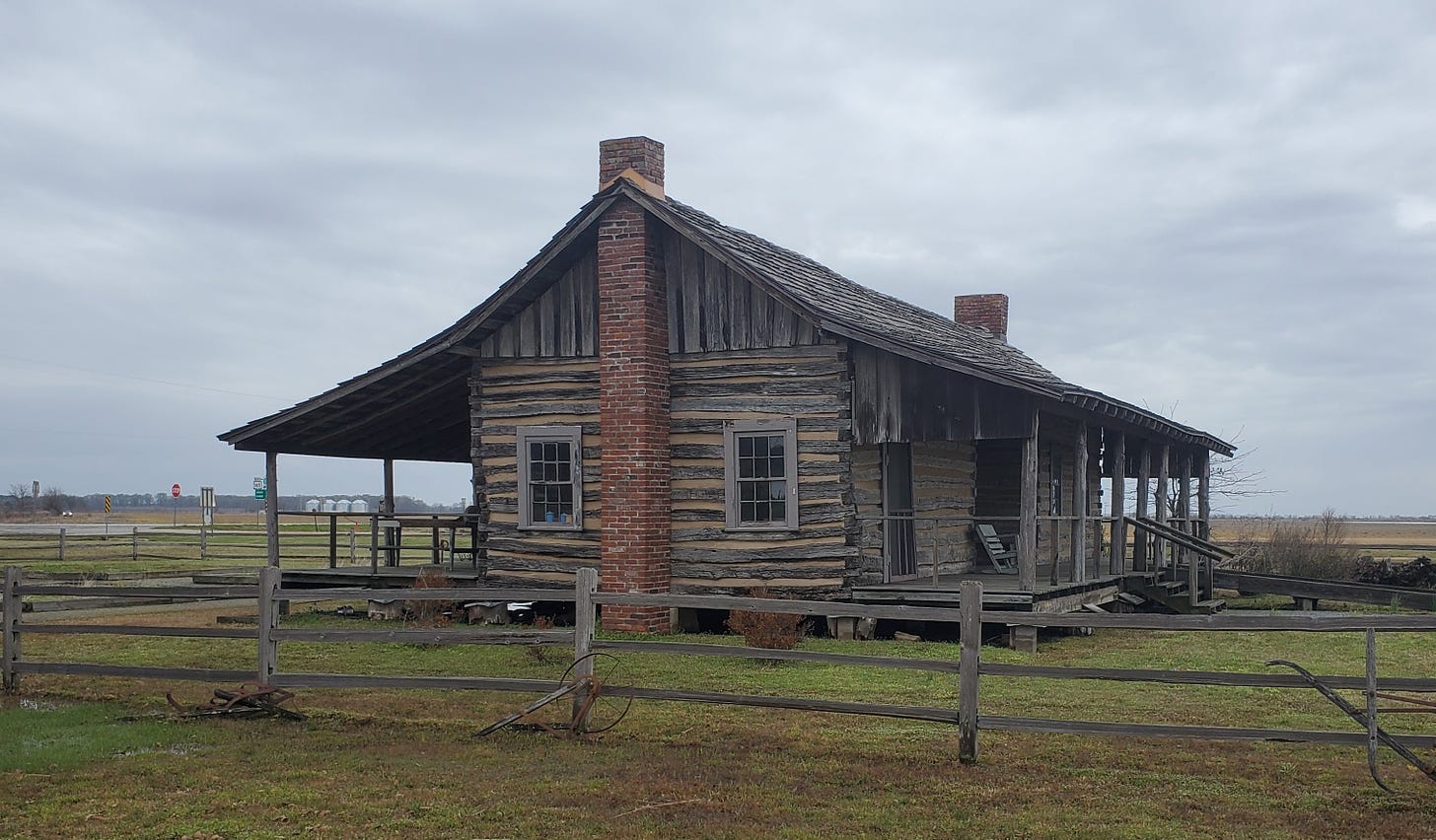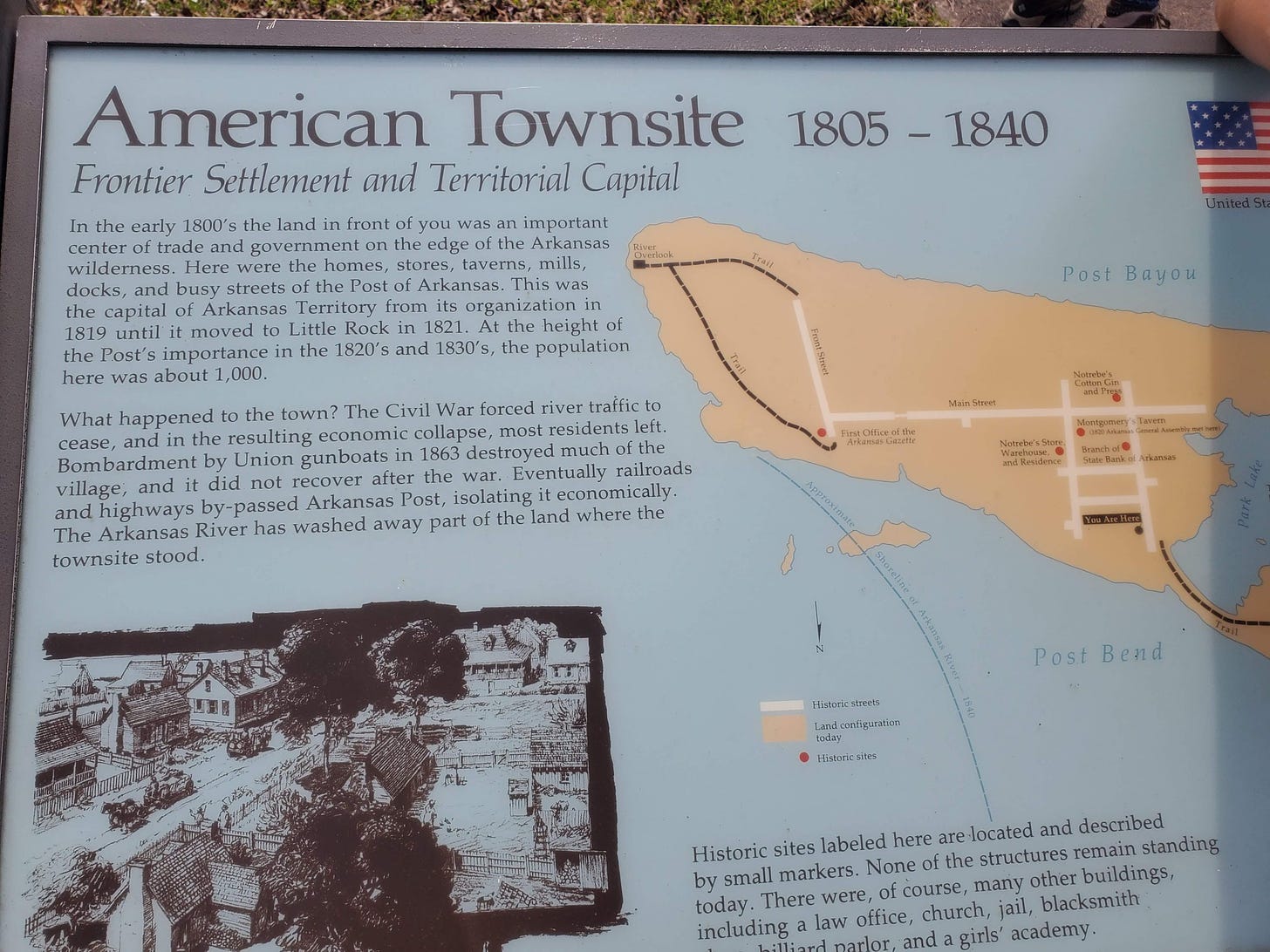Exploring the History of Arkansas Post
We take a day trip in the rain to visit a little-known National Historic Site
In Mission: Wanderlust, I write and podcast about our family’s travel adventures and the things that we have learned along the way.
Our family loves the National Park Service. I have planned entire vacations around visiting as many national parks as possible. I once sent my husband on a wild goose chase to find a park in Ohio so that I could get one more passport stamp.
But we had made plans to go to Cane Creek State Park for the sole purpose of going to the state park and camping with my parents. I wasn’t looking for any other activities because we were going to try to do everything that we could inside the state park.
Then we walked through the visitor center to get more information about park activities and I caught sight of a single National Park Service brochure sitting amongst the brochures for all of the Arkansas State Parks. I had to ask how far away this unknown NPS site was from Cane Creek, right?
It was about 40 minutes away, on the same road as another Arkansas state park site, and the weather wasn’t looking promising for our third and last full day in the state park.
I promptly added it our spring break to-do list.
For about 12 hours it looked like we wouldn’t be spending our last day of spring break venturing out. Heavy storms were hitting the southeast and there were reports of potential for severe weather, including tornados. My husband Jeff and I had discussed possibly leaving Arkansas a day early to head towards home to Houston, but we had no idea when exactly the storms would hit.
They hit us at 4 AM on our last full day.
By the time we woke up a second time, the storms were moving off and skirting around us, so we stuck with our plans to explore Arkansas Post.
Arkansas Post Museum
The drive to Arkansas Post initially gave me flashbacks to our drive through Louisiana five years before when I sent our family on another National Park Service quest. We were out on country roads surrounded by flooded fields from the previous night’s rain. But we finally came up on the entrance to the state park site, our first stop.
According to the museum brochure, the Arkansas Post Museum was established in 1960 as the first county museum in Arkansas. It states that “the mission of the Arkansas Post Museum is to engage diverse audiences in the cultural and biological heritage of the Arkansas Delta, with an emphasis on the Grand Prairie.”
The property includes a small museum and gift shop in the Main House, an example of a Summer Kitchen that was actually built in the mid-20th century to give visitors a taste of prairie life, and the Refeld-Hinman Log House which was moved to Arkansas Post State Park in the 1930s so it could be used as headquarters, and then moved again in the 1967 to the current property when the State Park became a National Memorial.
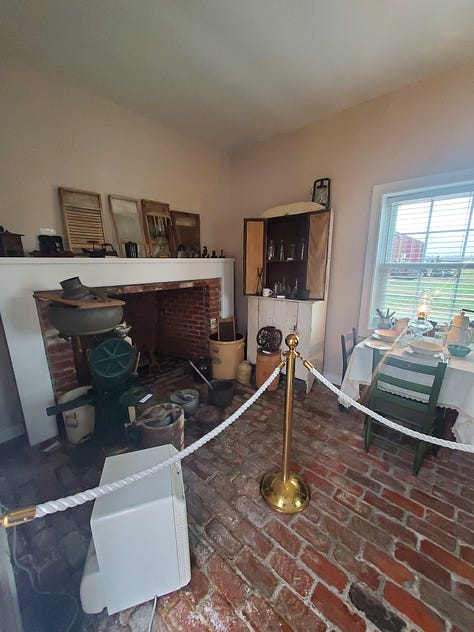


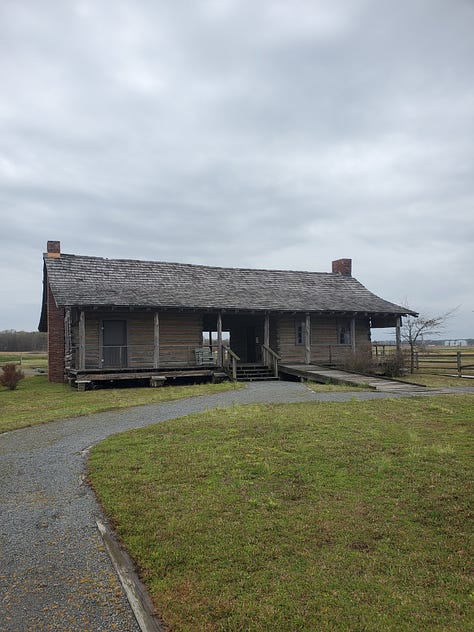

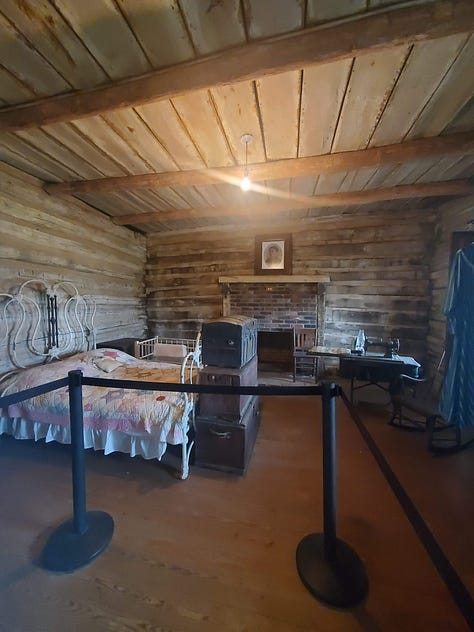
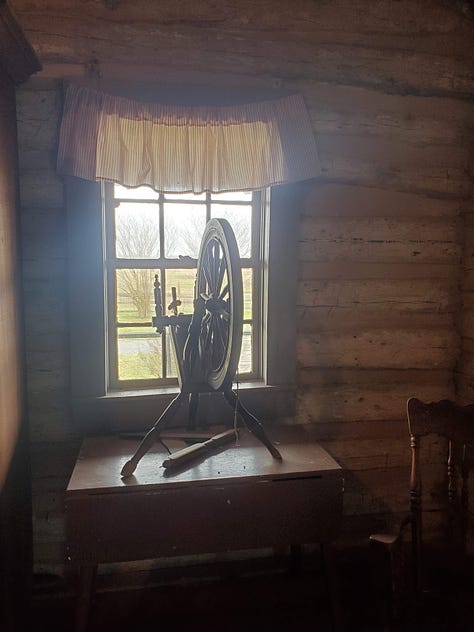
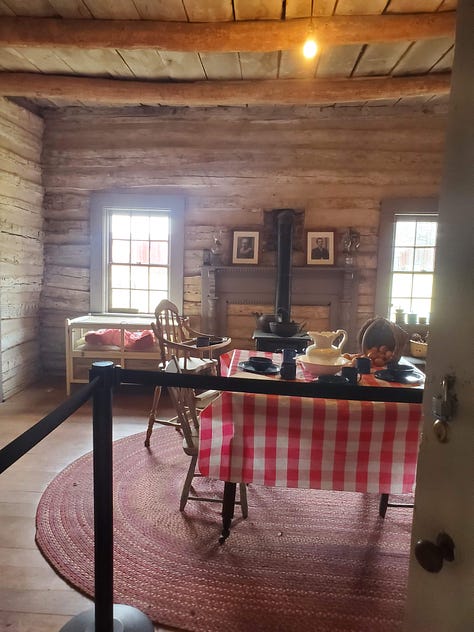
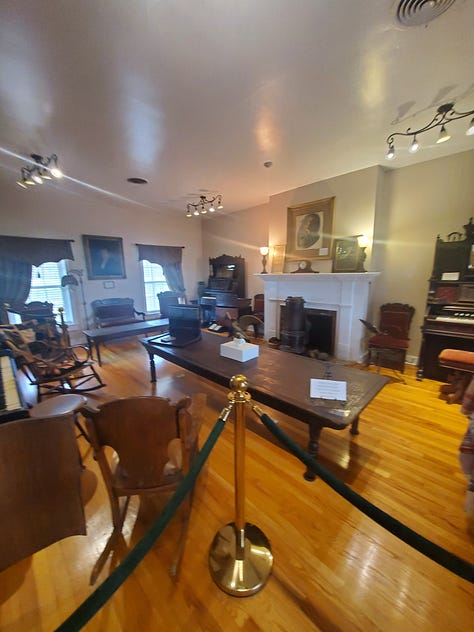
The property also includes a gallows display, completed with trap door that has since been welded shut, a piece of fascinating history that was also admittedly disturbing.
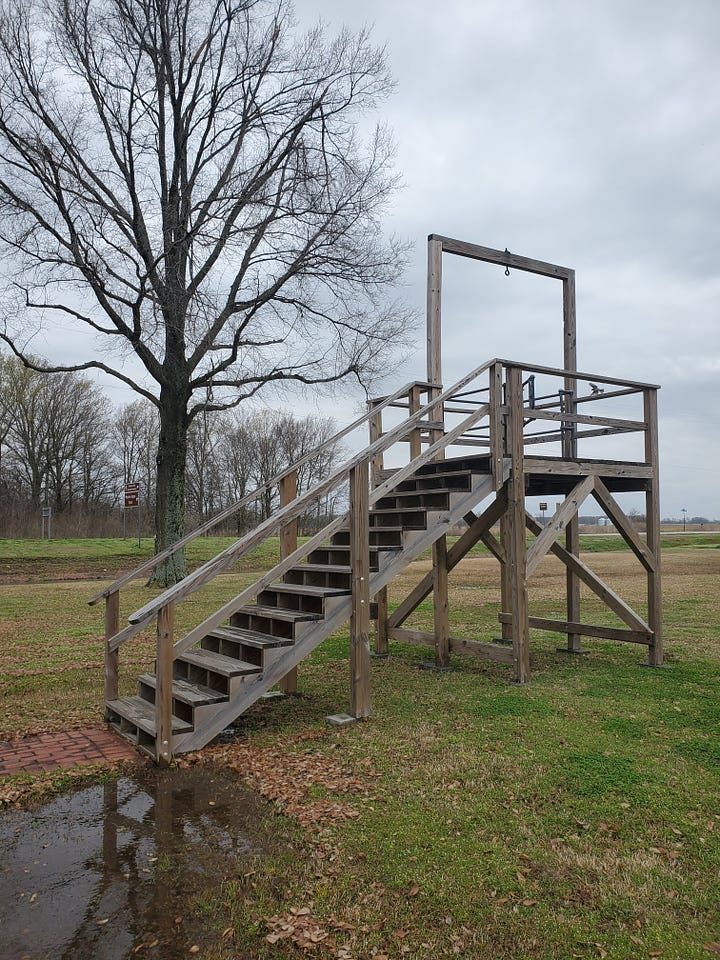
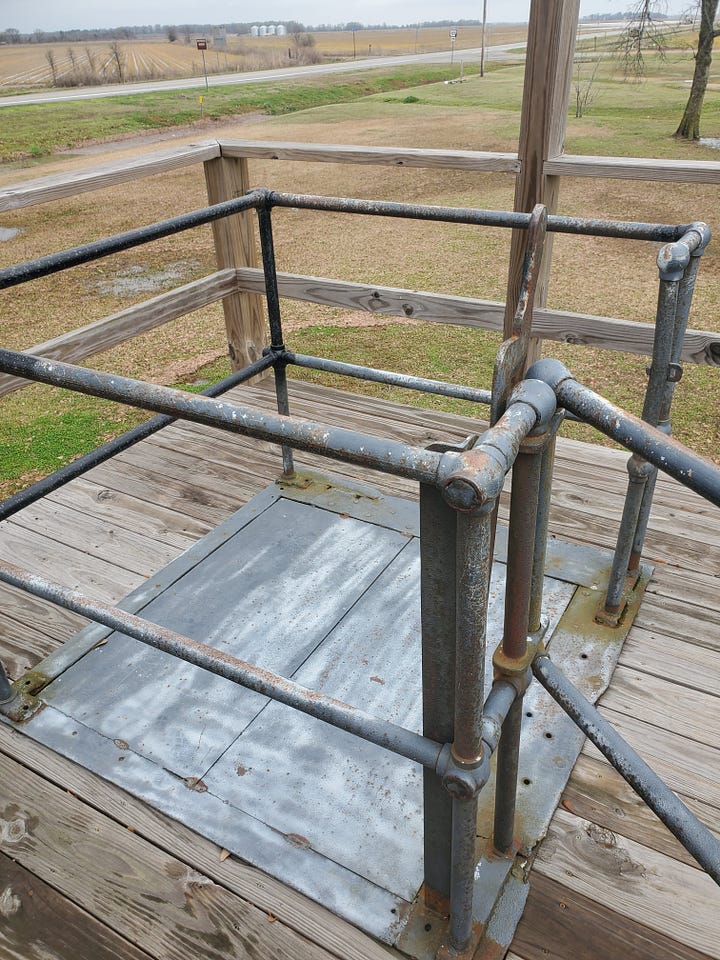
It was a short visit to the property, but it gave us some insight into the history and culture of east Arkansas. Then it was time to head to the National Memorial.
Arkansas Post National Memorial
Our first stop at the National Memorial was the picnic area immediate off of the entrance road. Nestled along the shores of the Post Bayou, we enjoyed a quiet lunch and looking out over the water, using the binoculars to get a better view of the white herons resting on the other shore.

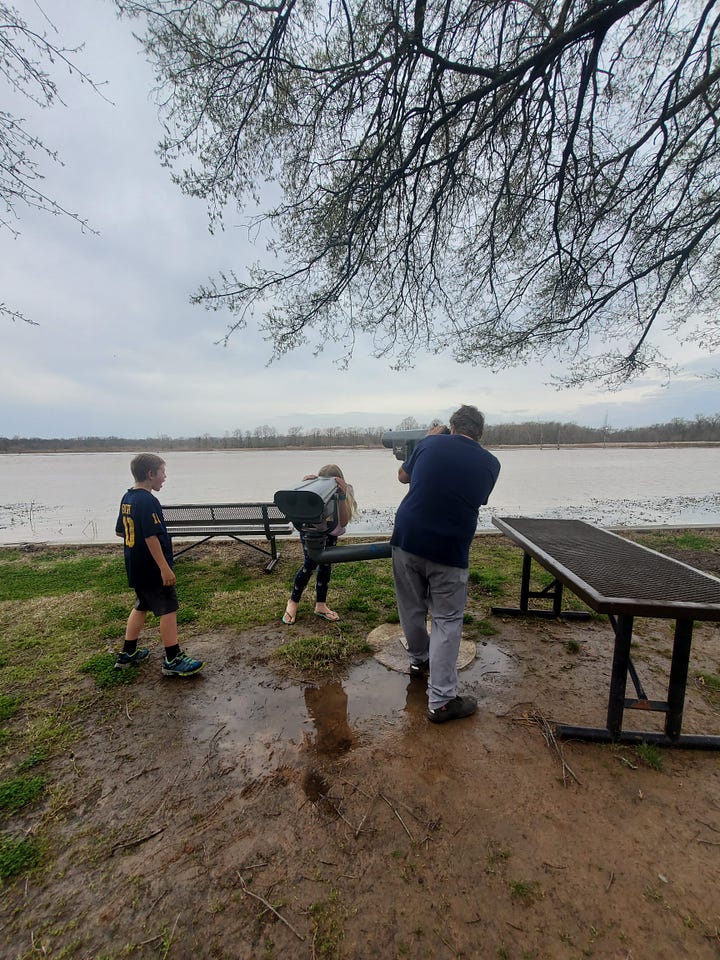
Next, we stopped to walk the trail to the Civil War rifle pits. During the Civil War, the peninsula was home to Fort Hindman, a Confederate earthwork that provided soldiers with a view of the Arkansas River for a full mile in either direction. It was also a supply base for Confederate boats that were frequently harassing and interrupting Federal supply lines on the Mississippi River. On January 10, 1863, 30,000 Union troops attacked the fort and eventually defeated the 5,000 troops stationed there, killing 60 and taking 4,971 prisoner.
The trail gives the timeline of the events, quotes from soldiers on both sides, and shows the remaining earthworks, which are barely visible nearly 160 years later.

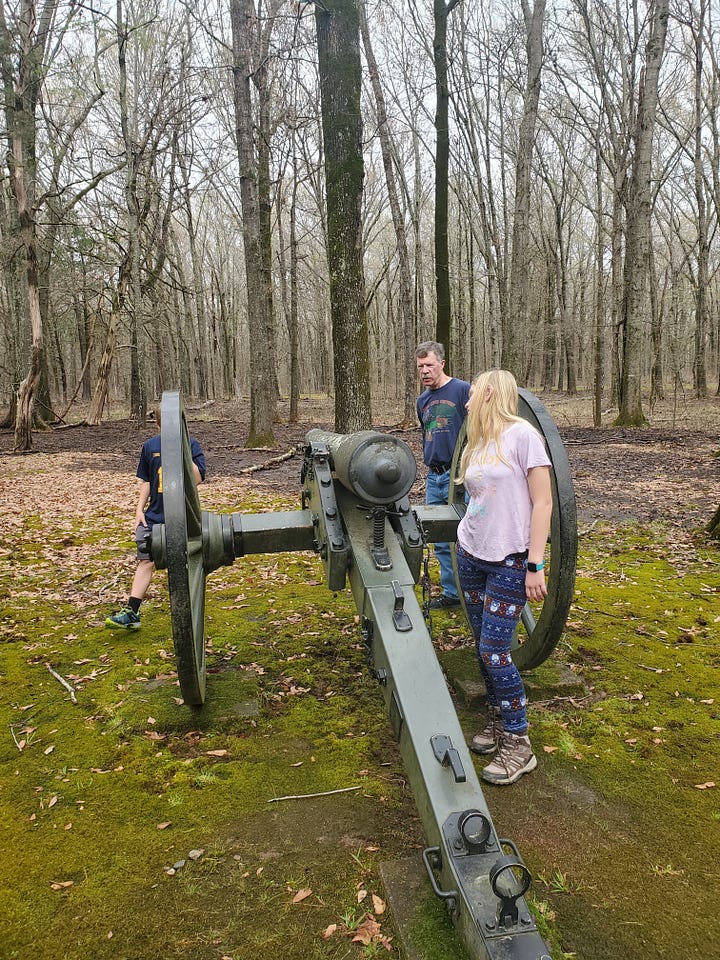
Next we headed to the visitor center, which was initially marked as closed but when the park ranger on duty saw us walking up to the doors, she gladly opened the door to talk to us, got out the table for us to stamp our passports, and handed us the Junior Ranger books and badges so we could swear our kids in once they finished the required activities.
Due to low traffic and COVID-19 restrictions, the visitor center at Arkansas Post is currently closed, but the rangers who watch over the property are more than willing to come out and talk to the few guests who drive out of their way to visit the property. Our knowledgeable ranger gave us the history of the park, talked to us about other parks, and was clearly eager and happy to speak to guests.

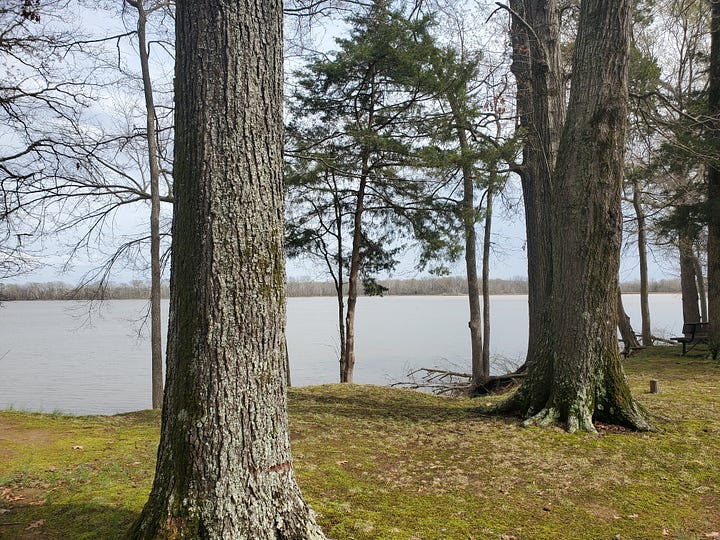
Behind the visitor center is an open field with walkways and markers showing the locations of buildings that were part of the town that was named Arkansas Post. It was originally founded in 1686, making in the first European settlement in the Lower Mississippi Valley. In 1819, it was named the capital of Arkansas Territory but started seeing decline in 1821 when the capital was moved to Little Rock. It experienced another boom in the 1830s thanks to it becoming a center of cotton production and a major river port. It once again declined in 1855 when the county seat was moved away from Arkansas Post, which made it a perfect place for Confederate soldiers to then build their fort in 1862. None of the original buildings exist on the property because they were destroyed by the shelling from Union troops.
We walked along the sidewalks and the nature trail that took us to the Arkansas River Overlook. Walking around the peninsula makes it clear why this was initially such an important part of Arkansas settlement and history, but also why it fell out of significance after the Civil War.
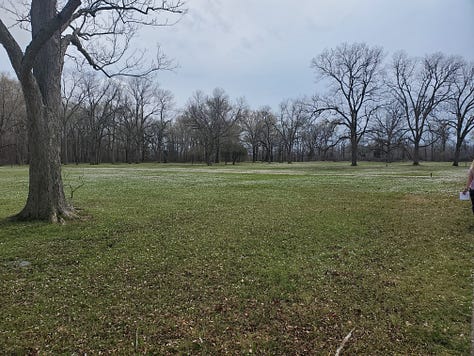

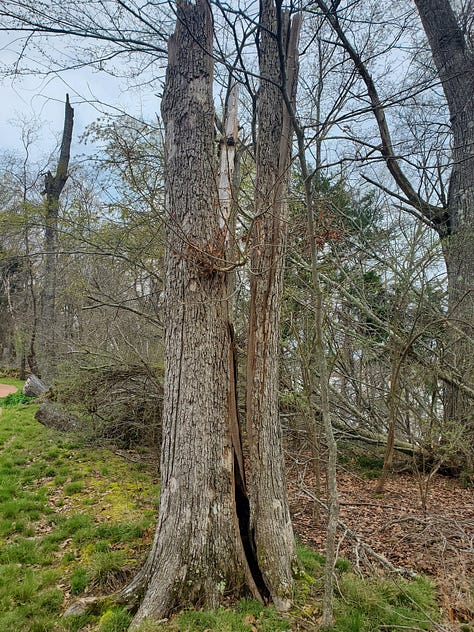
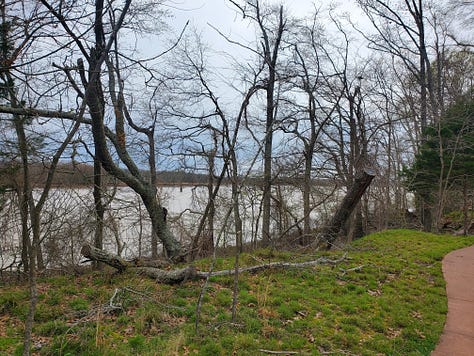
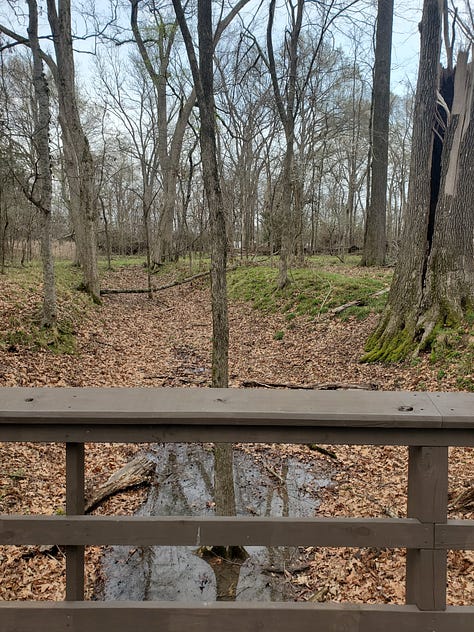

Our stop through Arkansas Post was unexpected, but as I’ve said many times before, I’m constantly working to accept the unexpected in my life. We were happy that we beat the rain and still got to learn some obscure history about both Arkansas and the Civil War.
A final note: Take the time to visit these off-the-beaten-path National Park Service sites. Our National Park Service needs our financial support as well as our presence to show just how important it is to the preservation of our public lands and our history. The rangers working at these sites love what they do and they are dedicated public officials. The last year has been difficult for them, as they’ve had to manage with significantly reduced funding along with limited ability to do a job they genuinely love. As we get vaccinated and emerge to a new normal, consider supporting some of the most dedicated government officials I have ever met and visit our national parks.
Please “like” by clicking on the ❤ and share this post with your friends so that others can join me on the journey.



